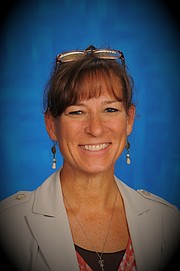Schools looking to parents, PHD for input
Officials planning to open in the fall according to Gov. Little’s proclamation
Gov. Brad Little didn’t need to make his Thursday proclamation that he expects all K-12 schools to open and stay open this fall in order to motivate educators. Local school officials were already formulating their plans.
“We know we will be back in our buildings, as much as possible, starting Sept. 8,” said Scott Maben, director of communications for Coeur d’Alene Public Schools. “The plans we are developing now will spell out how everything will work in our schools depending on the level of community transmission we are seeing.”
Those levels were outlined in Little’s back-to-school plan, recommendations his administration developed to give school districts guidance and best practices as they navigate the 2020-2021 school year. They cover all manner of otherwise-routine tasks in the day-to-day operations of the schools, from connecting at-risk students with resources like masks and hand sanitizer to deciding when it’s safest to hold a field trip. While the smaller details will be hashed out over the next month, the elephant in the room will loom large over each district’s strategies.
“Our plans also detail how we respond when we have a positive case in a school,” Maben said. “We have teams working on all of these plans now and are looking closely at the state guidelines …”
Dena Naccarato, superintendent for the Post Falls School District, agreed with Maben’s statement, saying that the district took the same mindset as Little that the in-person classroom experience is best for students.
“Our No. 1 goal in re-opening schools is to provide a safe learning environment,” Naccarato said. “It is our expectation all students have high-quality face-to-face educational experiences. Our plan will offer flexibility as we move between stages, while striving to maintain consistency for students, parents, and staff for their planning purposes.”
Up north, Dr. Becky Meyer explained how COVID-19 requires flexibility in ways never addressed before, all while lending voice to every parent’s fear in one of the most fearful times in the history of the American education system.
“If a case is confirmed,” the superintendent for Lakeland Joint School District said, “and students in one cohort are required to self-isolate, this creates a break in the flow of in-person instruction, so we must become adept at moving between in-person and online education for our students.”
Little’s plan calls for adaptable curriculum in case of emergency, one that will likely blend in-person classroom attendance with online, at-home learning, all mixed with strategies such as phased scheduling. But not all home resources are equal: Not every student has internet access — let alone daylong streaming capabilities — that can give kids the flexibility Little is asking for. It’s a deficiency Meyer and the other superintendents recognize.
“This requires resources and internet capabilities that not all families have,” she said, “along with additional planning and time for our teachers. We are working to address these issues before school resumes in the fall.”
Little emphasized in Thursday’s press conference that his plan is only guidance and resources, and not state-dictated mandates, but he made perfectly clear in his statements that he fully expects schools to not only open but remain consistently open into June. This leaves it up to individual school districts, school boards and charter schools to figure out the best way — on their own — how to move forward.
“In the fall, I expect Idaho schools to safely re-open for in-person education,” he said. “Despite the incredible advances in digital learning, you can never replace the impact of in-person interaction with a professional, dedicated teacher.”
All three officials interviewed for this story agreed that, in order for Little’s plan to have any success, collaboration will be necessary, not only from the local public health district — Panhandle Health — but with the most vital resource at the districts’ disposal: parents.
“We will need parents’ assistance in monitoring their students for symptoms,” Naccarato said, “keeping students home if they are ill, and maintaining open lines of communication with their schools.”
Both Lakeland School District and Coeur d’Alene School District are sending out surveys to parents and employees for their thoughts on how to navigate what promises to be the most challenging school year in the internet age.
“We are asking families to weigh in on a number of issues related to the new school year in a survey …” Maben said. “Likewise, we are asking our employees to tell us what they’d like to see this year to help them do their job as effectively as safely as possible. We will close the surveys July 24 and present the feedback to the School Board on Aug. 3, along with our draft for re-opening.”
Coeur d’Alene School District will then send its plan out for public review, and the school board will vote on final adoption Aug. 24. Lakeland has a similar survey in the works, one Meyer said was instrumental in determining how the district should proceed. Post Falls School District completed its parent surveys this week.
“Parents are the ultimate decision-makers on what they feel is best for their children,” Meyer said. “We are looking to parents for input into the district’s school re-opening plan and what will be best for all students.”









